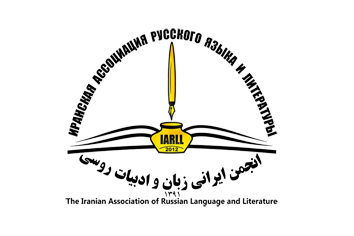ANTROPONYM TRANSFORMATION IN THE LINGUISTIC ASPECT
DOI:
https://doi.org/10.61186/iarll.20.41Keywords:
Anthroponym, Connotonym, Ethnonymization, Morphological, Graphic DevelopmentAbstract
The article discusses: 1. Individual anthroponyms under appropriate conditions can become ethnonyms, as a rule, having passed the stage of connotonymization. Those were Ivan, German, Fritz, John, John Bul, in jargon - Karapetyan, Mamed, Osman (in Don dialects), Khachik. 2. All the indicated anthroponyms - ethnonyms have morphologically mastered, there is no such uniformity in the graphic characteristics. 3. In the process of ethnonymization, a chronological factor plays a certain role: the last four anthroponyms perform this function in modern jargons. 4. Becoming a nomination of an ethnos, the original anthroponym can expand (John - John Buhl), as well as enter into derivational (Ivan → Ivanov → Ivan Ivanovich, Mamed - Mamedia) relations, as well as be phraseologized (Ivanov - Petrov - Sidorov). 5. Parallel to ethnonominization, stereotypes of perception of one or another nationality are taking shape. 6. The study of the process of ethnonymization in connection with the process of stereotyping is of undoubted scientific interest, primarily in the field of linguoimagology, linguoculturology, ethnopsycholinguistics.
Extended abstract:
The article is aimed to analyse the transition of anthroponyms into ethnonyms – names of a particular nation. Connotonymisation and symbolization are necessary parts of this process. Firstly, the reasons for connotonymisation are visible in the wide spread of anthropology under analysis, but the individuality of a native speaker is lost in the process of symbolization and connotonymisation and some kind of generalized image of a nation is created. It is worth mentioning that not all nations possess a similar nomination.
The aim of the research is to determine the ways of the transition of anthroponyms into ethnonyms. The result of the mentioned transition is captured not only in the language or culture of a donor nation, but also in the language consciousness of a recipient. This phenomenon is a subject of linguoimagology that studies verbalization of an image of one nation or country in the perception of another nation.
The tasks of the research:
To describe connotonymisation of corresponding anthroponyms, as a main stage of the transition.
To analyse the process of symbolization and define the list of anthroponyms that perform the function of ethnonyms.
Thus, the problem is studied at the intersection of lexicology, linguoimagology, linguoculturology, ethnolinguistics using the research apparatus of the above-mentioned directions of linguistics.
The material of the research is ‘Dictionary of connotative proper names’ by E.S. Otin.
All the analysed ethnonyms were subjected to morphological and, to some extent, to graphical adaptation. A graphical uncertainty is shown in jargon ethnonyms especially brightly, as jargon functions mainly in an oral form, and it is difficult to preserve monotony in a written form.
Anthroponyms, being initially absolutely neutral, becoming ethnonyms, get through a stage of connotonymisation, acquiring symbolic meaning, assessment and new stylistic coloration.
Let’s refer to a Russian, Ivan. Interestingly, a Hebrew meaning of the name can be found in dictionaries: Iahva (god) had mercy, ehve (god) had mercy.
Ivan becomes a usual connotative anthroponym with an interlingual connotation which is typical for a foreign (not Russian) language environment, but well-known for Russians: generalized nomination not only Russian, but any person from Russia or USSR and also Russian itself in some other nations.
Downloads
Published
How to Cite
Issue
Section
License
Copyright (c) 2022 Issledovatel'skiy Zhurnal Russkogo Yazyka i Literatury

This work is licensed under a Creative Commons Attribution 4.0 International License.
![]()
"Creative Commons Attribution 4.0 International (CC-BY 4.0)"


